Category:
Resource Type:
Language:
Social and Behavior Change Communication in Integrated Health Programs: A Scoping and Rapid Review

The aim of this review is to understand the nature and scope of social and behavior change communication in integrated health programs. This review includes informational interviews with individuals at organizations that are likely to have implemented integrated programs that have a SBCC component as well as a mapping of the existing peer-reviewed and grey literature about SBCC approaches in integrated programs.
Webinar on Capacity Strengthening Evaluation: What Role Can Outcome Harvesting Play?

This March 30, 2017 webinar featured an expert panel that discussed the challenges of evaluating capacity strengthening, what makes the outcome harvesting methodology unique and how outcome harvesting addresses some of the challenges of capacity strengthening evaluation.
Factors Impacting the Effectiveness of Health Care Worker Behavior Change: A Literature Review
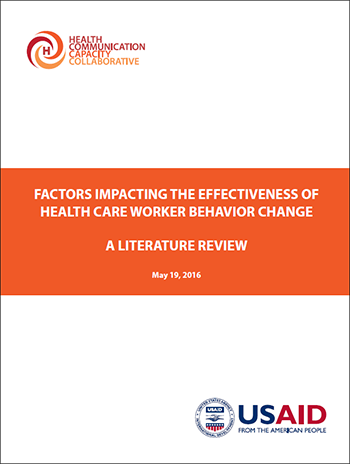
To maximize the impact of SBCC activities among HCWs, program designers and implementers must first develop an awareness of the barriers and facilitators that effect HCWs in providing these services.
Factors Impacting the Effectiveness of Community Health Worker Behavior Change: A Literature Review
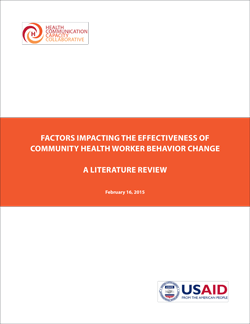
A key step in designing and implementing effective SBCC programs for CHWs is understanding the barriers and facilitators that effect CHWs in providing these services.
How to Get Published – A Conversation with Journal Editors Webinar
On May 11, HC3 hosted a University Initiative webinar/roundtable discussion among editors of communication journals. During a university needs assessment in 2013, HC3 identified some of the greatest challenges universities in sub-Saharan Africa and Asia face, including limited access to current literature and limited opportunities for scholarly publication. The webinar provided advice on how to improve […]
University Initiative Webinar – Models of University Engagement with Practice

University Initiative Webinar “Models of University Engagement with Practice” was held on November 25, 2014. It focused on how universities can strengthen their links to the community by working with faculty to incorporate service learning activities into their coursework, facilitating mentoring for university students placed in health communication/health education projects and organizing student internship programs […]
Propensity Score Matching
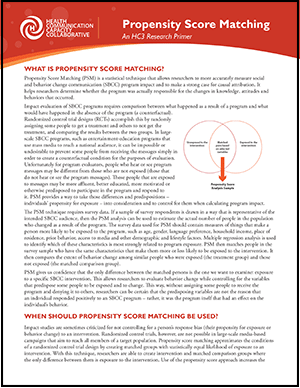
Propensity Score Matching (PSM) is a statistical technique that allows researchers to more accurately measure social and behavior change communication (SBCC) program impact and to make a strong case for causal attribution. It helps researchers determine whether the program was actually responsible for the changes in knowledge, attitudes and behaviors that occurred. Propensity Score Matching
Tags: research-primer
Ideation
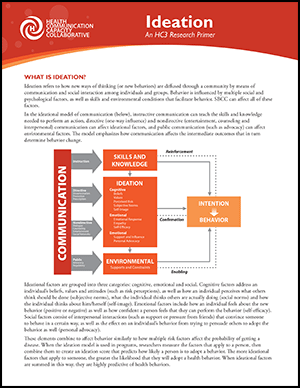
Ideation refers to how new ways of thinking (or new behaviors) are diffused through a community by means of communication and social interaction among individuals and groups. Behavior is influenced by multiple social and psychological factors, as well as skills and environmental conditions that facilitate behavior. SBCC can affect all of these factors. Ideation
Social Learning Theory
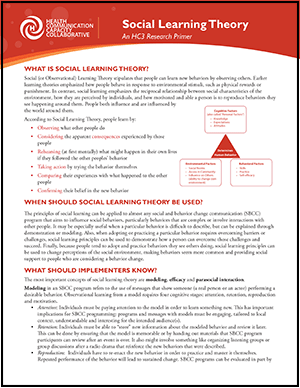
Social (or Observational) Learning Theory stipulates that people can learn new behaviors by observing others. Earlier learning theories emphasized how people behave in response to environmental stimuli, such as physical rewards or punishment. In contrast, social learning emphasizes the reciprocal relationship between social characteristics of the environment, how they are perceived by individuals, and how […]
Tags: primer
The Extended Parallel Processing Model

The Extended Parallel Processing Model (also widely known as Threat Management or Fear Management) describes how rational considerations (efficacy beliefs) and emotional reactions (fear of a health threat) combine to determine behavioral decisions. The degree to which a person feels threatened by a health issue determines his or her motivation to act, while one’s confidence to effectively reduce […]
Tags: primer
Health Communication in the Curriculum webinar
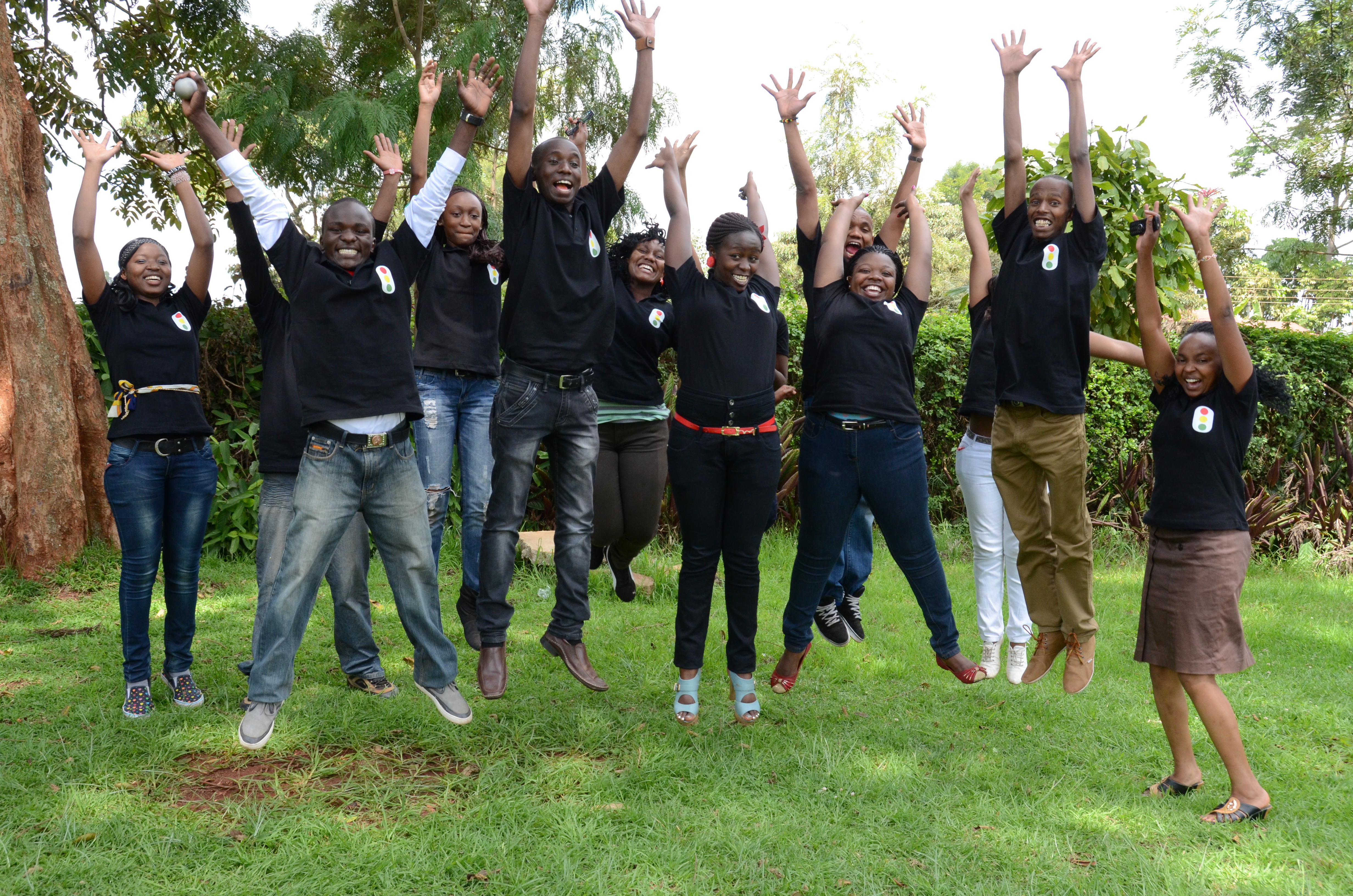
On September 5, 2014 the first HC3 University Initiative Webinar was conducted on Health Communication Pedagogy.
Gender Transformative Approaches

Gender transformative approaches (GTA) are programs and interventions that create opportunities for individuals to actively challenge gender norms, promote positions of social and political influence for women in communities, and address power inequities between persons of different genders.
Integrated Model of Communication for Social Change
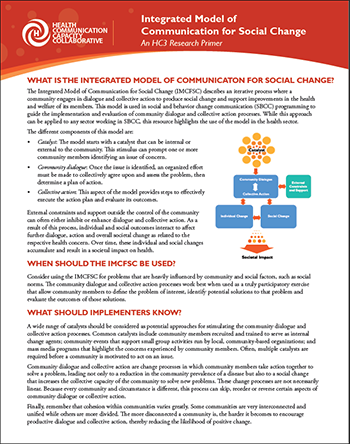
The Integrated Model of Communication for Social Change (IMCFSC) describes an iterative process where a community engages in dialogue and collective action to produce social change and support improvements in the health and welfare of its members.
Blended Learning for Social and Behavior Change Communication Fact Sheet
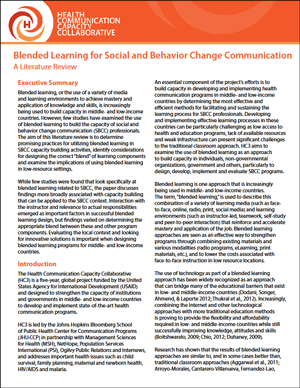
Blended learning, or the use of a variety of media and learning environments to achieve mastery and application of knowledge and skills, is increasingly being used to build capacity in middle- and low-income countries. However, few studies have examined the use of blended learning to build the capacity of social and behavior change communication (SBCC) […]
Blended Learning for Social and Behavior Change Communication: A Literature Review
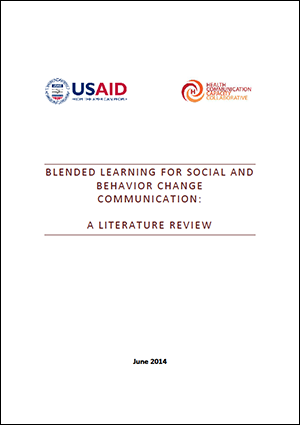
Blended learning, or the use of a variety of media and learning environments to achieve mastery and application of knowledge and skills, is increasingly being used to build capacity in middle- and low-income countries. However, few studies have examined the use of blended learning to build the capacity of social and behavior change communication (SBCC) […]
University Initiative Needs Assessment
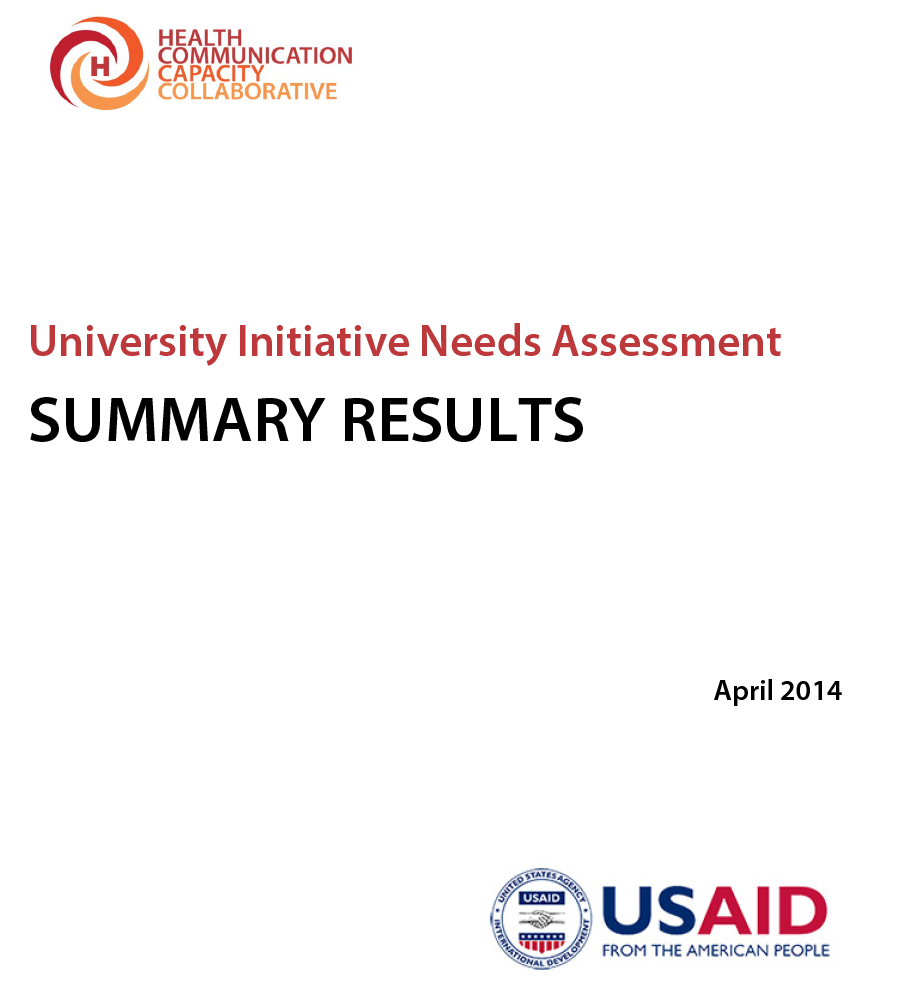
An important focus of the Health Communication Capacity Collaborative (HC3), a USAID-funded global communication capacity building project, is to expand the role universities and training institutes play in local and regional health communication practice, teaching and research. As a first step, HC3 conducted an assessment to identify current areas of strength and opportunity for growth […]
Theory of Planned Behavior
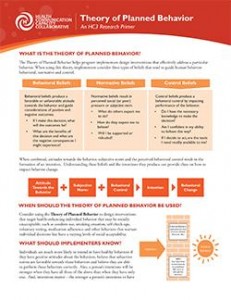
This research brief describes the Theory of Planned Behavior and when it should be used in designing social and behavior change communication programs. It also features a case study of the theory in action, as well as what implementers need to know about the Theory of Planned Behavior. Theory of Planned Behavior
Diffusion of Innovations
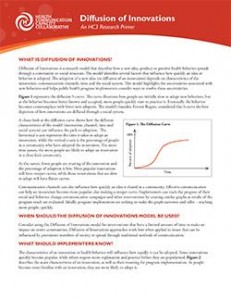
This research brief describes the Diffusion of Innovations research model and when it should be used in designing social and behavior change communication programs. It also features a case study of the model in action, as well as what implementers need to know about Diffusion of Innovations. Diffusion of Innovations Research Brief (PDF)

